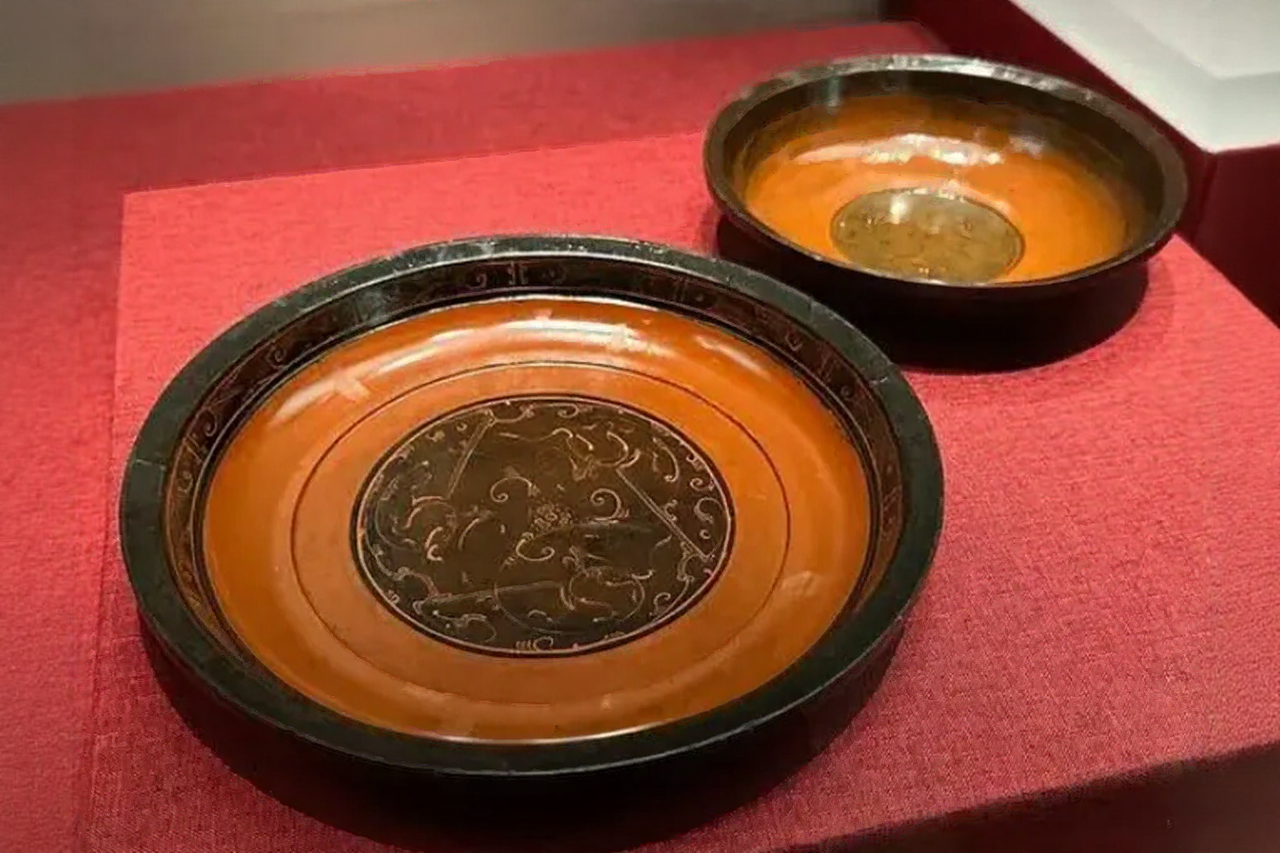In the long river of Chinese civilization, lacquer shines like a brilliant star, weathering thousands of years and radiating a unique and captivating light. It has frequently appeared in various classic texts with a practical, mysterious, and noble presence. Moreover, in gatherings of literati and discussions among renowned scholars, it has fully displayed its elegance and splendor, becoming an indelible bright spot in Chinese culture.
Master Zhuang Zhou once said, “Cinnamon can be eaten, so it is felled; lacquer can be used, so it is tapped.” This accurately points out the reason why lacquer was widely recognized and used for its practical value. Archaeological discoveries show that as early as seven thousand years ago, the Hemudu people living south of the Yangtze River had already used lacquer to make bowls. These vessels became necessities for their daily food consumption, initiating the practical chapter of lacquer in human life.
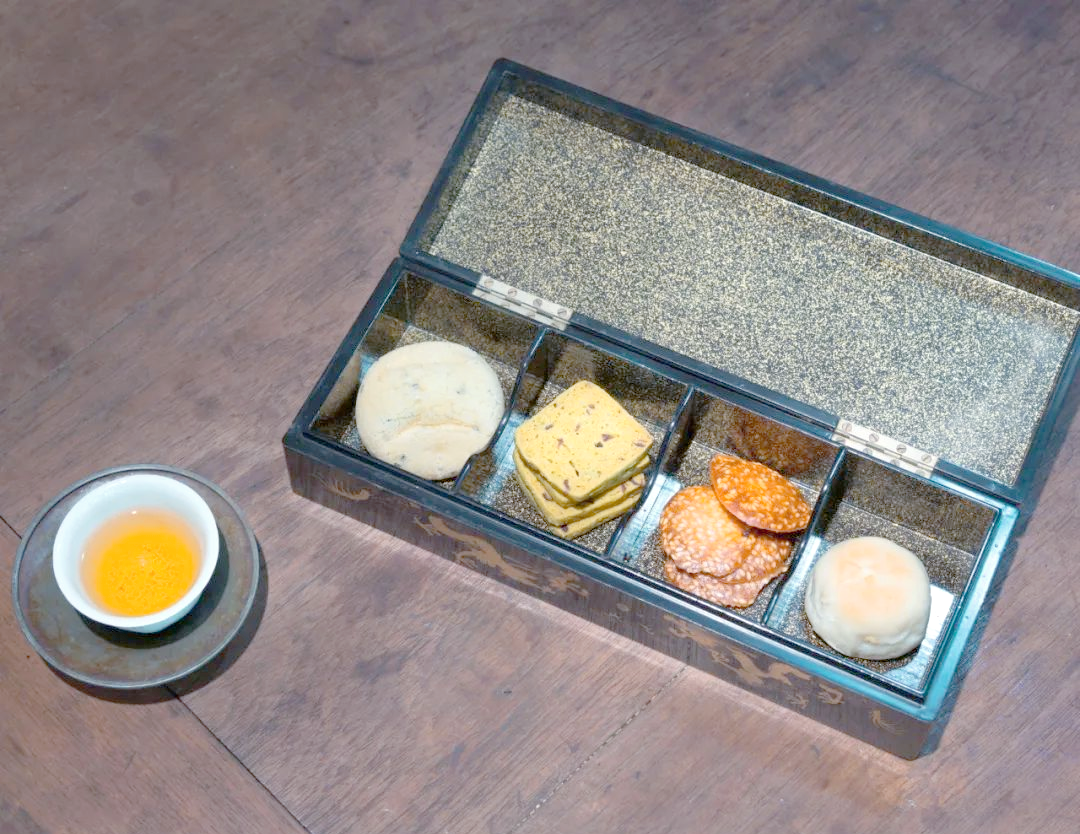
The uses of lacquer have a long history, displaying diverse styles in different historical periods. Initially, it was used for writing on bamboo slips. During the reign of Emperor Shun, it was even used to make tableware, with a unique design of black on the outside and red on the inside, symbolizing noble status. However, due to the rarity and preciousness of lacquer, this extravagant use did not become widespread. By the time of the Great Yu, lacquer, with its anti-corrosion and high-temperature resistance properties, was mainly used to make sacrificial vessels, allowing ancient writings to be preserved for a long time and making great contributions to the inheritance of civilization.
The Qin and Han Dynasties ushered in the golden age of lacquer’s development. From the Spring and Autumn and Warring States periods to the unification of the six states by Emperor Qin Shi Huang, lacquer production significantly increased, and lacquer craftsmanship developed rapidly. The application of lacquerware in daily life became increasingly widespread. Various daily necessities such as cups, plates, bowls, boxes, caskets, stoves, and bottles were made using lacquer, and furniture also began to be widely coated with lacquer. The 186 pieces of lacquerware unearthed from the late Warring States to Qin Dynasty tombs at Shuihudi in Yunmeng County, Hubei Province, including ear cups, round boxes, and long double-eared boxes; and the exquisite lacquerware products such as low tables, lacquer boxes, and lacquer spoons excavated from Tomb No. 1 of Duke Qin in Fengxiang, Shaanxi Province, fully demonstrate the widespread popularity of lacquerware in the social life of that time.
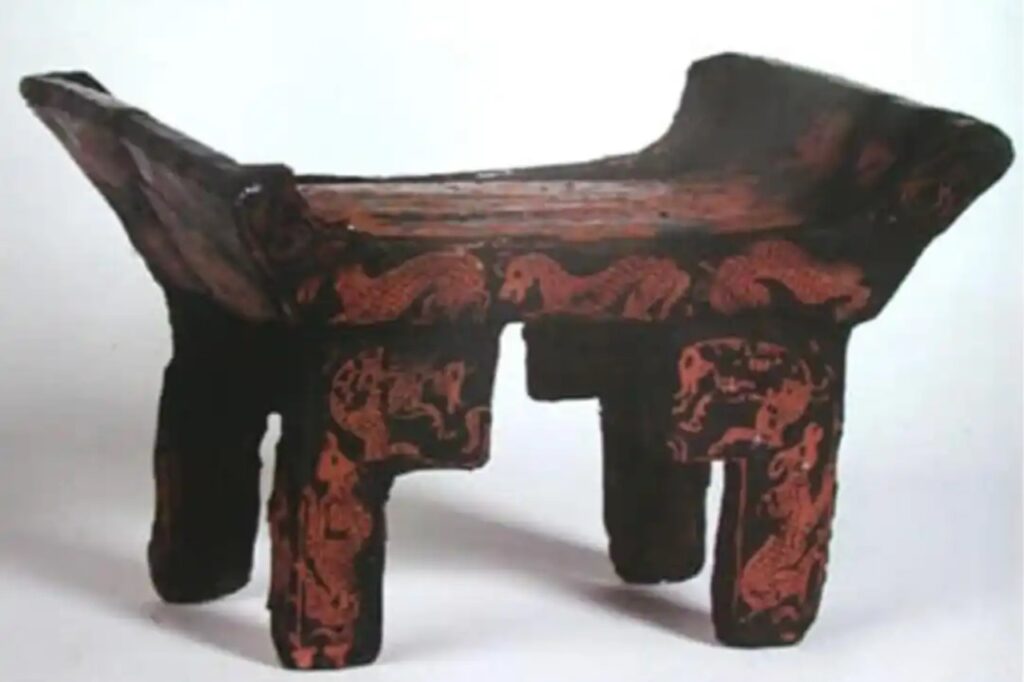
The extravagance of Emperor Qin Shi Huang pushed the application of lacquer to its extreme. He had the surfaces of nearly eight thousand terracotta warriors and horses in his mausoleum coated with lacquer. Numerous relics such as wooden chariots, bow handles, pi tao (long-handled swords in sheaths), arrow quivers, and weapon handles were also meticulously lacquered. The Second Emperor, Huhai, even (vainly attempted) to have the entire Afang Palace coated with lacquer. Although this crazy idea reflected his extreme extravagance, it also showed that the production and application of lacquer in the Qin and Han Dynasties had penetrated into all levels, no longer limited to the royal aristocracy.
In the Han Dynasty, the application fields of lacquer were extremely broad. The coating of buildings such as palaces, temples, and grand mansions; the decoration of the hulls of multi-storied ships and the exteriors of carriages and horses; and the production of food utensils, wine vessels, ritual vessels, and furniture all relied on lacquer. Lacquerware had become an indispensable part of Han people’s lives, playing a crucial role from daily living to travel and entertainment, and even to coffins and tombs after death. It is worth mentioning that at this time, lacquer not only possessed practical functions but also gradually evolved into a decorative art, adding endless beauty to life.
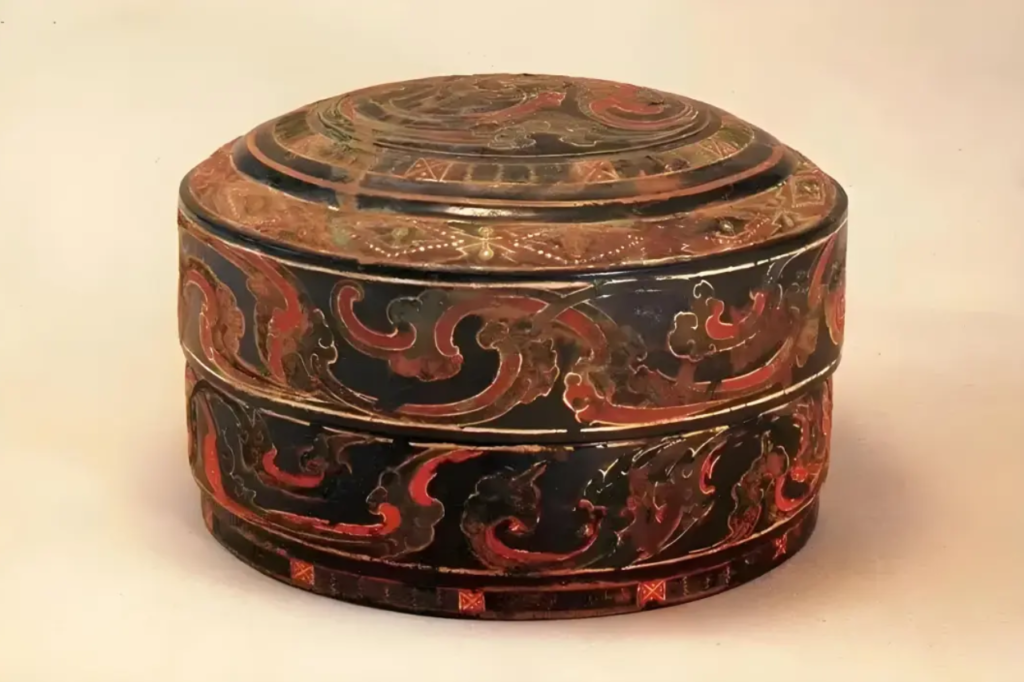
The exquisite development of lacquer craftsmanship was a key factor in the transition of lacquer from practicality to decoration. Since the Warring States period, various patterns and designs began to appear on lacquerware. These patterns not only enhanced the aesthetic appeal but also filled daily life with aesthetic interest. With the passage of time, the patterns and designs became increasingly rich and diverse, and the shapes also continuously innovated, giving rise to more novel styles. Ultimately, complete and exquisite paintings appeared on lacquerware, with vivid depictions of landscapes, figures, flowers, and birds, fully displaying the beauty of lacquer.
The continuous progress of lacquer craftsmanship brought rich aesthetic expression possibilities to lacquerware. During the two Han Dynasties, new techniques such as needle-engraving with gold filling, piled lacquer, and inlay emerged in large numbers. In the Tang Dynasty, the level of craftsmanship reached its peak, with a dazzling array of carved and chiseled lacquerware. The decorations of the two Song Dynasties were simple yet exquisite. The carved lacquer techniques of the Yuan Dynasty were admirable. In the Ming and Qing Dynasties, various complex decorations such as variegation, multiple layers, patterns within patterns, and filling inlays jointly created a colorful world of lacquerware.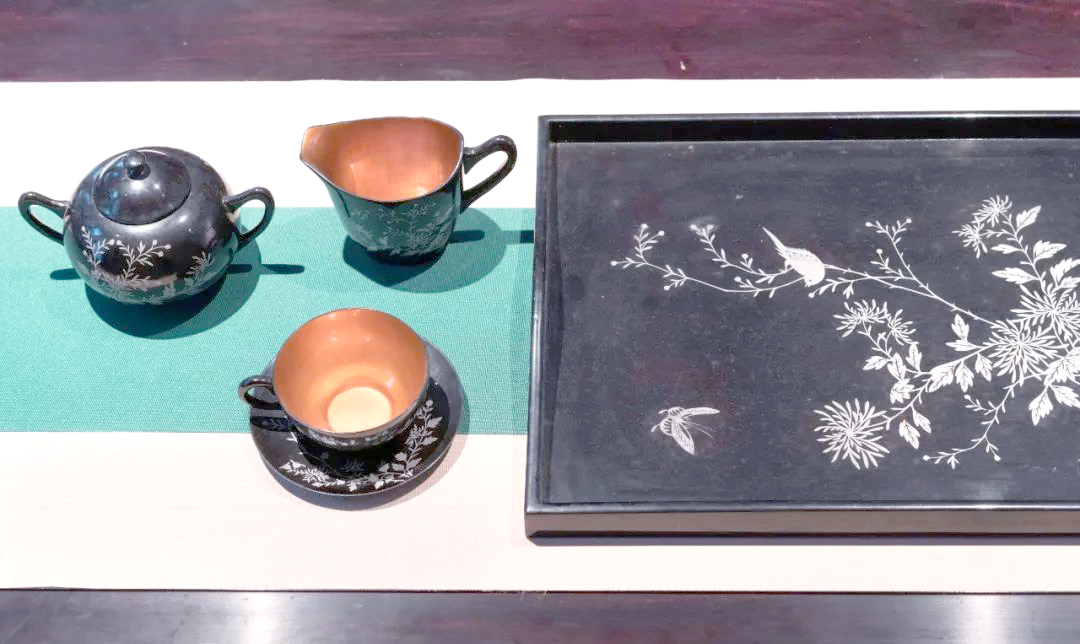
However, since the Han Dynasty, although lacquerware was widely used in various dynasties, its practical function in daily life was gradually replaced with the continuous emergence of new materials. The popularity of porcelain overshadowed lacquerware products such as cups, plates, and bowls, and the introduction of precious woods such as huanghuali (rosewood) and zitan (red sandalwood) changed the pattern of furniture making. Entering modern times, lacquerware gradually faded out of people’s daily lives, replaced by new materials such as synthetic paint and chemical paint. Today, our surroundings are filled with more practical and inexpensive materials such as ceramics, plastics, metals, and glass, making natural lacquer products scarce and precious. However, lacquer has not completely disappeared; it continues to exist in our vision in the form of lacquer paintings. Through this emerging art category, many people are experiencing the unique charm and temperament of natural lacquer for the first time.
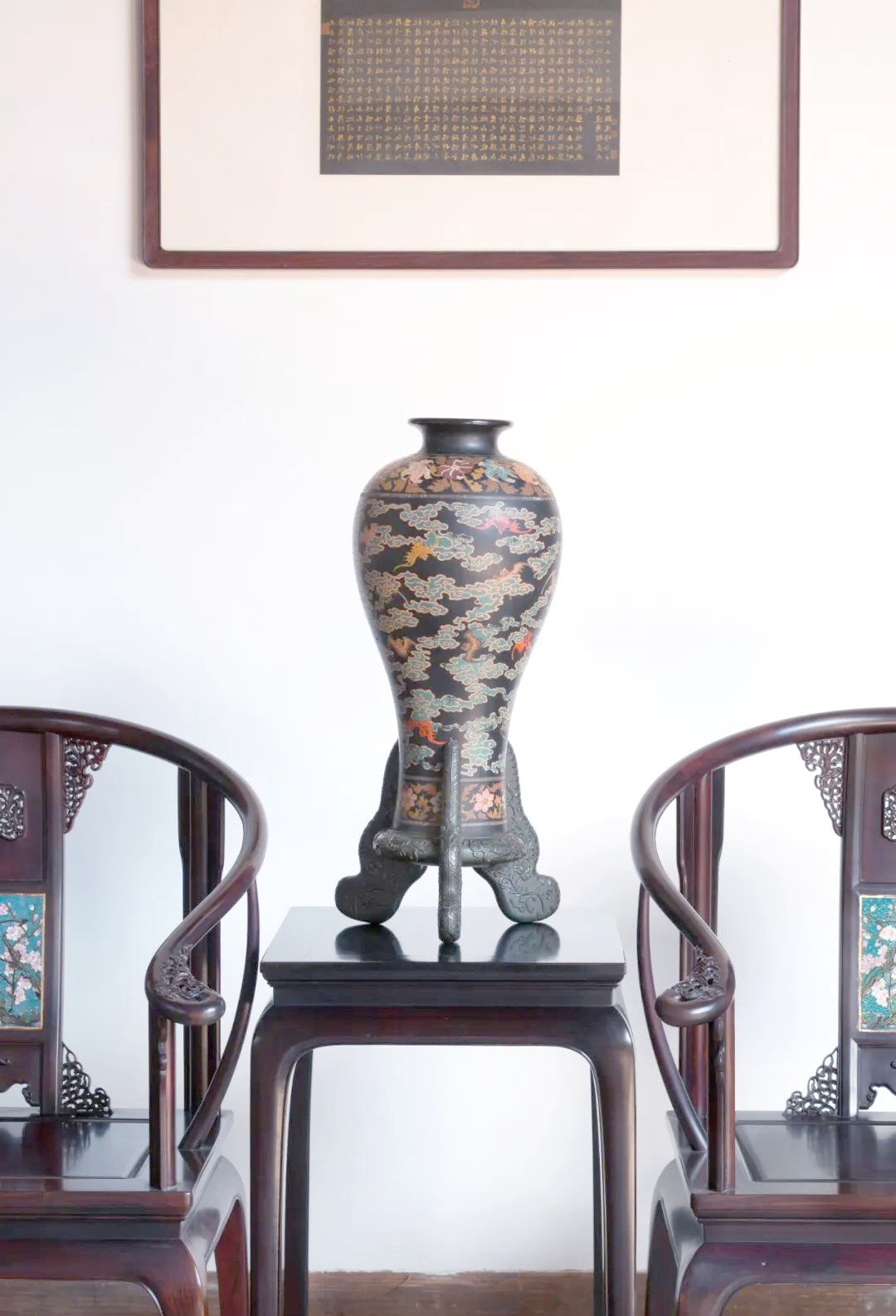
From everyday utensils to decorative art pieces, and then to lacquer paintings as easel art, the role of lacquer has continuously transformed, bringing us rich experiences. It is precious and beautiful, with a beauty that is mysterious, profound, clean, and environmentally friendly. However, in today’s materially abundant environment, it is no longer realistic to make lacquer products essential necessities of daily life again. Facing diverse material choices, lacquer painting, as a refined art form, although difficult for ordinary people to appreciate and possess, and seemingly further away from daily life, still holds unique significance.
When we carefully feel the unique temperament of lacquer, whether it is the deep and charming color or the intoxicating lacquer fragrance, we will sincerely marvel at the magical creation of nature. The perfect combination of lacquer painting and lacquer further showcases the infinite charm of art. On the low table in front of the hall, placing one or two pieces of contemporary exquisitely crafted tuo tai (bodiless) lacquerware, such as lacquer combs, lacquer boxes, lacquer plates, and lacquer vases, and appreciating them leisurely, allows us to feel the unique charm of lacquer in our admiration.
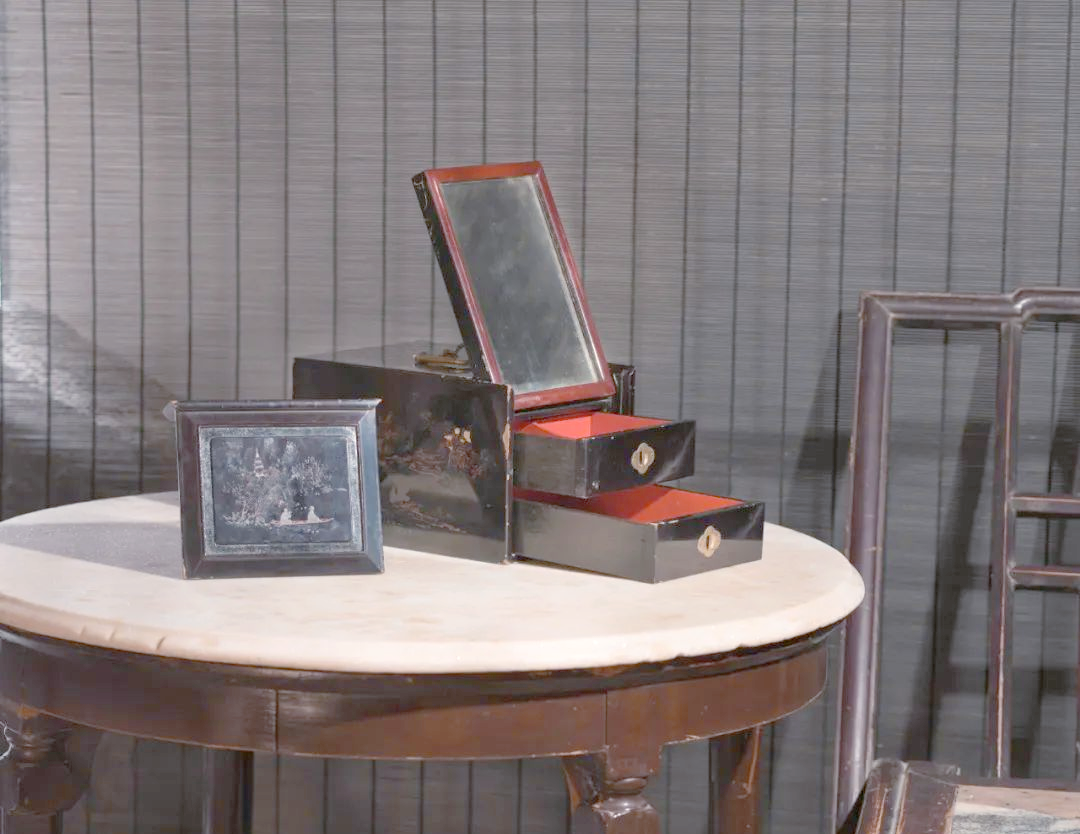
“Utensils are tangible objects; the Dao is an intangible realm.” Over the long river of history, lacquer has carved out ever-changing forms and scenes, giving us the opportunity to recognize and perceive the awe and contemplation of the unknown world by small individuals and finite lives, and to improve and sublimate the meaning of ourselves. Its application in lacquerware and lacquer painting, whether it is exquisite craftsmanship or unique artistic expression, enriches our lives and adorns our world. This is the precious significance that lacquer bestows upon us.

